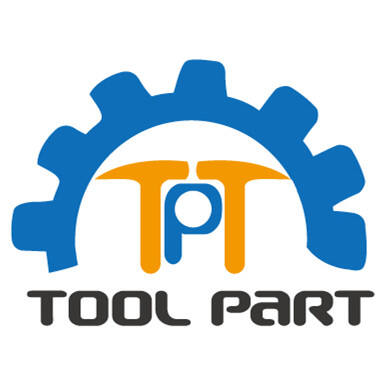Understanding the Essential Components of Modern Angle Grinders
Angle grinders are versatile power tools that have revolutionized metalworking, construction, and DIY projects. To truly master this indispensable tool, you need to understand how its various angle grinder parts work together to deliver powerful cutting, grinding, and polishing performance. From the motor housing to the grinding disc, each component plays a crucial role in ensuring smooth, efficient operation and workplace safety.
Whether you're a professional tradesperson or a passionate DIY enthusiast, knowing your tool's anatomy helps you maintain it properly and achieve optimal results. Let's dive deep into the world of angle grinder components and discover how each part contributes to the tool's impressive capabilities.
Core Components and Their Functions
Power Source and Motor Assembly
The heart of any angle grinder lies in its power system. The motor assembly consists of the electric motor, armature, and field coils that convert electrical energy into mechanical power. Modern angle grinder parts in this section typically include carbon brushes that maintain electrical contact with the spinning armature. The motor housing shields these vital components while providing proper ventilation to prevent overheating during extended use.
Different power ratings suit various applications, from light-duty 4-inch grinders to heavy-duty 9-inch models. The motor's efficiency directly impacts the tool's performance, especially when tackling demanding tasks like cutting through thick metal or concrete.
Gear Housing and Drive Mechanism
The gear housing contains the drive train that transfers power from the motor to the spinning head. This assembly includes precision-engineered gears that maintain optimal speed and torque. The gear mechanism is typically housed in a durable metal casing and bathed in lubricating grease to ensure smooth operation and longevity.
Regular maintenance of these angle grinder parts is essential, as they endure significant stress during operation. The gear ratio is carefully calculated to deliver the ideal balance of speed and power for various applications.
External Components and Control Features
Handle and Grip System
The ergonomic design of modern angle grinders incorporates multiple grip positions for enhanced control and safety. The main handle houses the power switch and often features vibration-dampening materials. Most models include an auxiliary handle that can be mounted on either side of the tool or on top, depending on the application and user preference.
These angle grinder parts are crucial for maintaining precise control during operation. The anti-vibration technology helps reduce user fatigue during extended use, while the textured grip surfaces prevent slipping even in demanding conditions.
Guard and Safety Features
The guard assembly is one of the most critical safety-related angle grinder parts. This adjustable shield protects the operator from sparks, debris, and potential disc fragments. Modern guards feature tool-free adjustment mechanisms for quick positioning while maintaining secure attachment to the tool body.
Additional safety features may include restart protection, soft start technology, and emergency stop switches. These components work together to prevent accidents and ensure operator safety in various working conditions.
Cutting and Grinding Attachments
Disc Mounting System
The spindle and flange system secures grinding discs and other accessories firmly in place. These angle grinder parts include the threaded spindle, inner flange (backing flange), and outer flange (locking nut). The spindle lock button facilitates quick disc changes while ensuring the attachment remains secure during operation.
Understanding the proper assembly of these components is crucial for safe operation. Different disc types may require specific mounting hardware, and all parts must be compatible with the tool's specifications.
Accessory Options and Adaptability
Modern angle grinders support a wide range of accessories through standardized mounting systems. From cutting discs and grinding wheels to wire brushes and polishing pads, the versatility of these tools stems from their interchangeable angle grinder parts. The tool's collar size determines compatible accessory dimensions, typically ranging from 4 to 9 inches.
Each accessory type serves specific applications, and proper selection ensures optimal performance and safety. Manufacturers continue to innovate with new attachment designs that expand the tool's capabilities.
Maintenance and Care Considerations
Regular Inspection Points
Maintaining angle grinder parts requires regular inspection of key components. Check the power cord for damage, inspect carbon brushes for wear, and ensure all mounting hardware remains tight. The gear housing should be checked for proper lubrication, and ventilation ports must be kept clear of debris.
Professional users should establish a maintenance schedule based on usage patterns. This proactive approach helps identify potential issues before they lead to tool failure or safety hazards.
Replacement and Upgrade Options
When angle grinder parts show signs of wear, timely replacement ensures continued safe operation. Common replacement items include carbon brushes, power switches, and auxiliary handles. Some components, like specialized guards or upgraded gear sets, offer opportunities for performance enhancement.
Always use manufacturer-approved replacement parts to maintain tool integrity and warranty coverage. Keep frequently needed spare parts on hand to minimize downtime during critical projects.
Frequently Asked Questions
How often should angle grinder parts be inspected?
Professional users should perform visual inspections before each use and conduct thorough examinations monthly. DIY users should inspect their tools before each project and at least quarterly for less frequent use patterns.
What are the most commonly replaced angle grinder parts?
Carbon brushes typically require replacement every 50-100 hours of use. Other frequently replaced items include power switches, auxiliary handles, and grinding guards due to wear or damage during normal use.
Can I upgrade my angle grinder with aftermarket parts?
While some aftermarket angle grinder parts are available, it's recommended to use manufacturer-approved components to ensure safety and maintain warranty coverage. Certain upgrades, like enhanced guards or ergonomic handles, may be acceptable if they meet original equipment specifications.
What causes premature wear in angle grinder components?
Excessive pressure during use, inadequate maintenance, exposure to dust and debris, and operating the tool beyond its rated capacity can accelerate wear on various angle grinder parts. Following proper operating procedures and maintaining clean working conditions helps extend component life.

